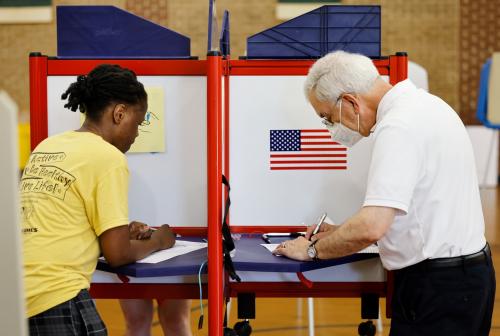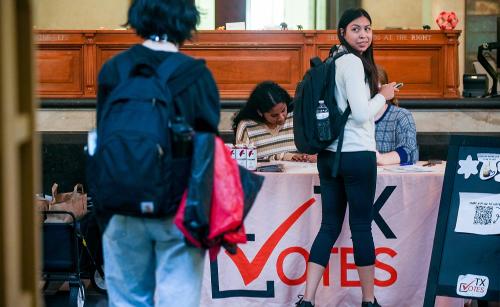The United States is one of the few countries in the world that uses political primaries to choose who will represent major political parties in general elections. Decade after decade, turnout in primaries lags well behind turnout in general elections. The small size of most primary electorates, the fact that some states limit participation to registered members of a political party thus decreasing the potential pool of voters even further, and the often low or near invisible press coverage of so many primaries means that, in contrast to other elections, primaries receive little attention from either press or scholars. Congressional primaries nonetheless have a profound impact on policymaking in the United States. A better understanding of their outcomes is essential to understanding modern American politics.
For that reason, in 2014, the Center for Effective Public Management established The Primaries Project. This year, authors Elaine Kamarck, Alex Podkul, and Nick Zeppos update the project to include two illuminating new papers that examine the 2016 congressional primaries:
- “Political polarization and voters in the 2016 congressional primaries” examines who voted in the 2016 primaries and whether they differed significantly from general election voters. The authors commissioned a first-of-its-kind exit poll for congressional primaries, allowing them to conduct unprecedented analyses and to test the validity of long-held beliefs about primary voters.
- “Political polarization and candidates in the 2016 congressional primaries” looks at who ran in the primaries, what issues they were talking about, and what internal divisions were on display within each party. The authors meticulously examined and coded the websites of nearly every candidate that filed to run in a congressional primary to reveal what winning and losing candidates of both parties built their campaigns around.
Key findings about those who vote in congressional primaries, and those who run in them, include:
- Voters in congressional primaries tend to be older and more highly educated (thus with higher incomes) than both the general population and the general election electorate. On other demographic variables, they resemble the general electorate quite closely.
- Key indicators of partisanship and ideology suggest that the politician’s conventional wisdom is right: the primary electorate is unique.
- Very few primary voters in either party—but especially in the Republican party—said experience was the most important quality: only 14 percent of the entire sample and only 9.7 percent of the Republican voters. And yet these voters re-nominated incumbents to office in enormous numbers.
- The candidates who decided to run in the 2016 congressional primaries reflected the overall makeup of our political elites: largely male, well-educated, and married. The one exception is that they are more likely to have served in the U.S. military than the average citizen.
- The political parties have gotten so far apart that there was only one issue that appeared in the list of the top five most-discussed issues by both Democrats and Republicans running in primaries. Of the 19 different issue positions tracked by this project, only the Affordable Care Act was in the top five for candidates from both parties.
- Republican incumbents are challenged more often than Democrats, and when they are, they also perform worse against their challengers when compared to their Democratic counterparts.
The authors conclude both papers by discussing what these new data mean for the short-term future of American politics and government. “The internal divisions which appeared powerfully in the presidential primaries and less powerfully in the congressional primaries may well have the effect of causing incumbents to govern with one eye over their right (or left) shoulder as the case may be,” the authors write, before adding that “getting ‘primaried’ is not a paranoid fiction of the congressional mind.”
Read “Political polarization and candidates in the 2016 congressional primaries”
Read “Political polarization and voters in the 2016 congressional primaries”




